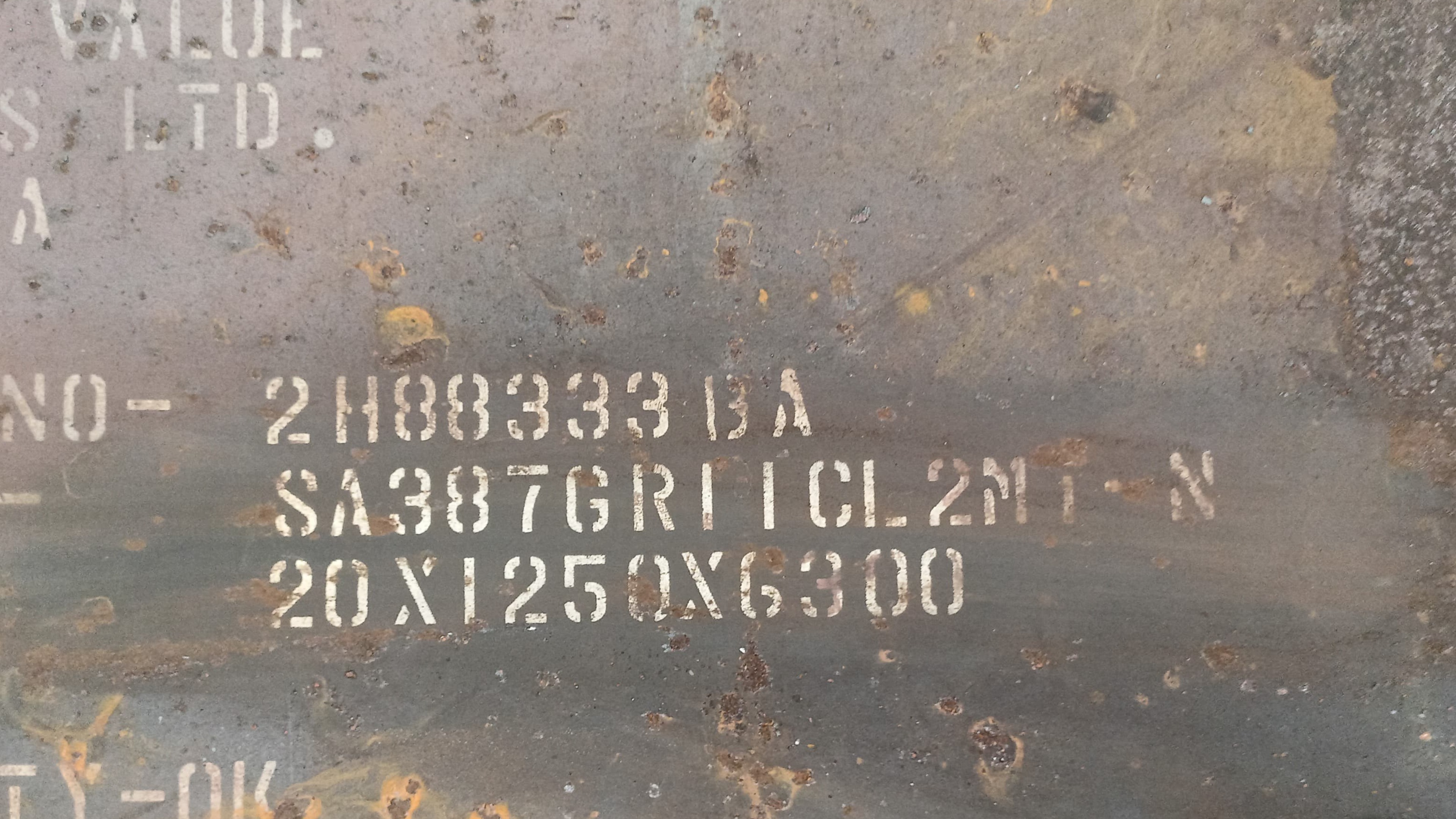SA 387 Grade 11 Class 2 is a specification for chromium-molybdenum steel plates, widely used in the fabrication of boilers, pressure vessels, and other high-temperature applications. Here's a detailed brief: Material Properties: - Chromium (Cr): 1.00-1.50% - Molybdenum (Mo): 0.45-0.65% - Carbon (C): 0.05-0.17% - Manganese (Mn): 0.40-0.65% - Silicon (Si): 0.50-0.80% Mechanical Properties: - Tensile Strength: 515-690 MPa (75-100 ksi) - Yield Strength: 310 MPa (45 ksi) minimum - Elongation: 18% minimum - Reduction of Area: 45% minimum Applications: - Petrochemical and chemical processing equipment - Power generation (boilers, heat exchangers) - Oil and gas industry (refineries, processing plants) - High-temperature and high-pressure applications Class 2: - Class 2 material is normalized and tempered to achieve the required mechanical properties. - This class is suitable for applications where high strength and toughness are required. Key Benefits: - Excellent high-temperature strength and resistance to oxidation - Good weldability and fabricability - Resistance to hydrogen attack and sulfide corrosion Equivalent Specifications: - ASTM A387 Grade 11 Class 2 - EN 10028-2: 13CrMo4-5 - DIN 17155: 13CrMo44 Fabrication and Welding: - SA 387 Grade 11 Class 2 material can be welded using conventional welding processes (SMAW, GTAW, GMAW, SAW). - Preheating and post-weld heat treatment may be required to minimize residual stresses and ensure optimal mechanical properties. This brief provides an overview of the material properties, applications, and benefits of SA 387 Grade 11 Class 2 steel plates. If you need more specific information or have further questions, feel free to ask!
Chat with us on WhatsApp
×
This is your website preview.
Currently it only shows your basic business info. Start adding relevant business details such as description, images and products or services to gain your customers attention by using Boost 360 android app / iOS App / web portal.
https://www.sambhavpipesfittings.com/latest-update/sa-387-grade-11-class-2-is-a-specification-for-chr/139
SA 387 Grade 11 Class 2 is a specification for chr...

2025-05-24T05:17:58
SA 387 Grade 11 Class 2 is a specification for chromium-molybdenum steel plates, widely used in the fabrication of boilers, pressure vessels, and other high-temperature applications. Here's a detailed brief: Material Properties: - Chromium (Cr): 1.00-1.50% - Molybdenum (Mo): 0.45-0.65% - Carbon (C): 0.05-0.17% - Manganese (Mn): 0.40-0.65% - Silicon (Si): 0.50-0.80% Mechanical Properties: - Tensile Strength: 515-690 MPa (75-100 ksi) - Yield Strength: 310 MPa (45 ksi) minimum - Elongation: 18% minimum - Reduction of Area: 45% minimum Applications: - Petrochemical and chemical processing equipment - Power generation (boilers, heat exchangers) - Oil and gas industry (refineries, processing plants) - High-temperature and high-pressure applications Class 2: - Class 2 material is normalized and tempered to achieve the required mechanical properties. - This class is suitable for applications where high strength and toughness are required. Key Benefits: - Excellent high-temperature strength and resistance to oxidation - Good weldability and fabricability - Resistance to hydrogen attack and sulfide corrosion Equivalent Specifications: - ASTM A387 Grade 11 Class 2 - EN 10028-2: 13CrMo4-5 - DIN 17155: 13CrMo44 Fabrication and Welding: - SA 387 Grade 11 Class 2 material can be welded using conventional welding processes (SMAW, GTAW, GMAW, SAW). - Preheating and post-weld heat treatment may be required to minimize residual stresses and ensure optimal mechanical properties. This brief provides an overview of the material properties, applications, and benefits of SA 387 Grade 11 Class 2 steel plates. If you need more specific information or have further questions, feel free to ask!
2025-05-24T05:17:58

Submit Your Enquiry